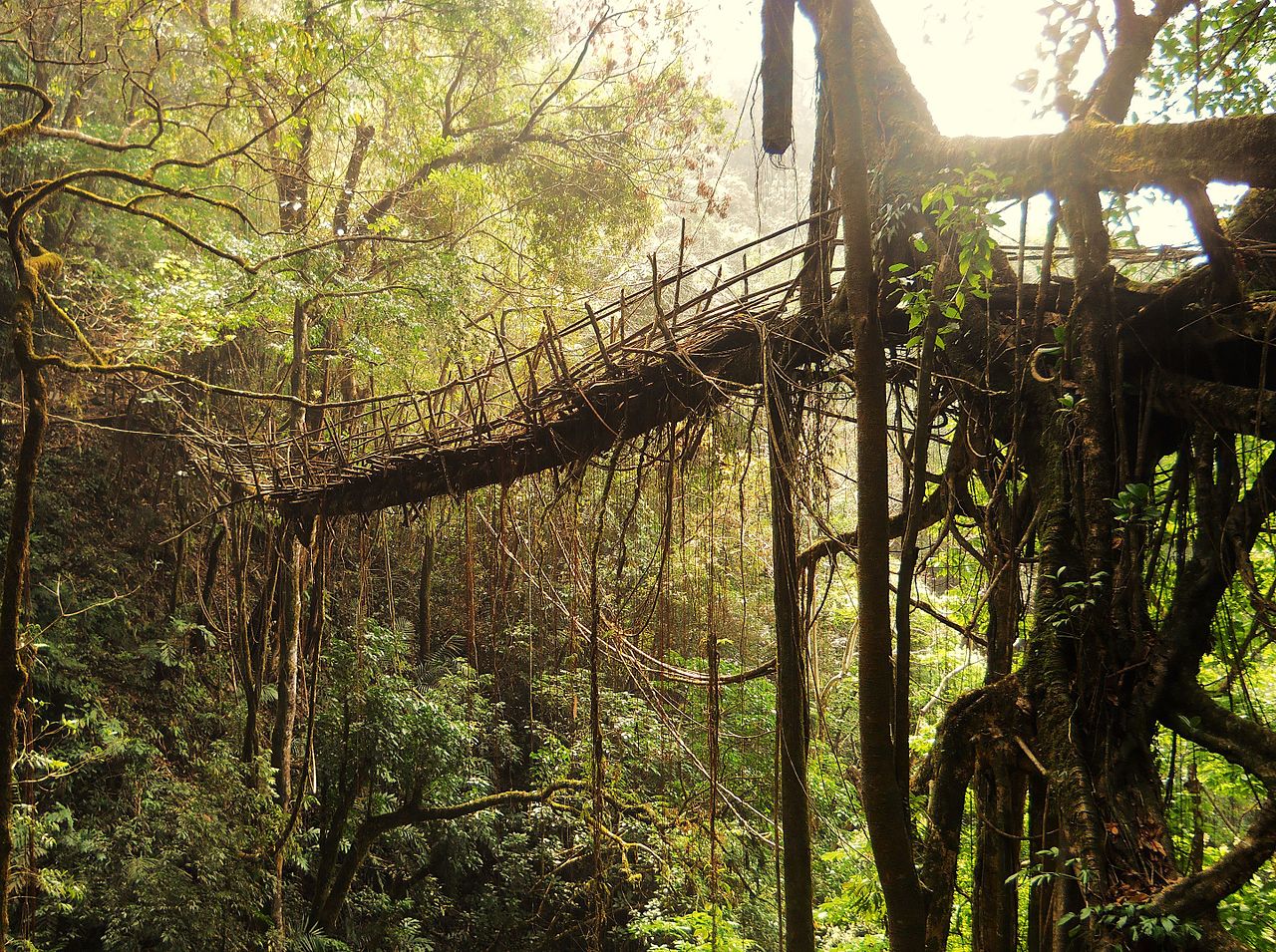In the depths of northeastern India, in one of the wettest places on earth, bridges aren’t built—they’re grown.
 |
| Photo Credit : wikipedia.org |
The war-khasis, a tribe in meghalaya, lengthy in the past observed this tree and saw in its powerful roots an possibility to easily move the region’s many rivers. now, every time and wherever the want arises, they truely develop their bridges. to be able to make a rubber tree’s roots grow within the right direction—say, over a river—the khasis use betel nut trunks, sliced down the middle and hollowed out, to create root-steering structures. the skinny, soft roots of the rubber tree, averted from fanning out by the betel nut trunks, develop instantly out. when they attain the opposite aspect of the river, they’re allowed to take root in the soil. given enough time, a robust, dwelling bridge is produced.
The basis bridges, a number of which can be over a hundred ft lengthy, take ten to fifteen years to come to be absolutely purposeful, however they’re surprisingly robust—robust sufficient that some of them can guide the load of 50 or greater humans at a time. in fact, due to the fact they are alive and nevertheless developing, the bridges certainly gain power through the years—and some of the historic root bridges used every day by way of the people of the villages round cherrapunji can be well over 500 years vintage.
One unique root bridge, believed to be the simplest considered one of its type inside the international, is truly bridges stacked one over the other and has grow to be known as the “umshiang double-decker root bridge.” local willpower to the bridges has saved them from being destroyed in desire of steel ones. what’s extra, a brand new root bridge at the double-decker site online is presently being grown and must be equipped to be used within a decade.
 |
| Photo Credit : wikipedia.org |
 |
| Photo Credit : wikipedia.org |

No comments:
Post a Comment